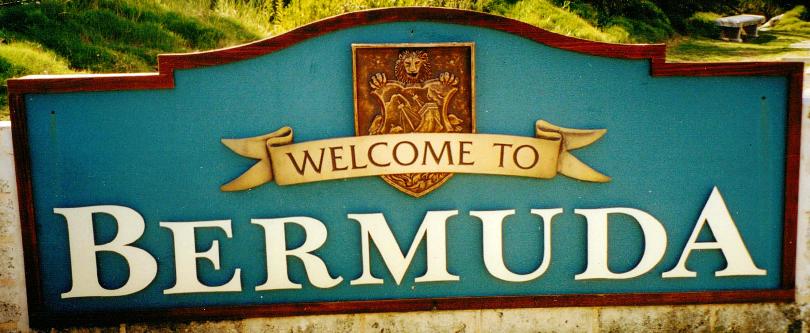
Click on graphic above to navigate the 165+ web files on this website, a regularly updated Gazetteer, an in-depth description of our island's internally self-governing British Overseas Territory 900 miles north of the Caribbean, 600 miles east of North Carolina, USA. With accommodation options, airlines, airport, actors, actresses, aviation, banks, beaches, Bermuda Dollar, Bermuda Government, Bermuda-incorporated businesses and companies including insurers and reinsurers, Bermudians, books and publications, bridges and causeway, charities, churches, citizenship by Status, City of Hamilton, commerce, communities, credit cards, cruise ships, cuisine, currency, disability accessibility, Devonshire Parish, districts, Dockyard, economy, education, employers, employment, environment, executorships, fauna, ferries, flora, former military bases, forts, gardens, geography, getting around, golf, guest houses, highways, history, historic properties, Hamilton, House of Assembly, housing, hotels, immigration, import duties, internet access, islands, laws, legal system and legislators, main roads, marriages, media, members of parliament, money, motor vehicles, municipalities, music and musicians, newcomers, newspaper, media, organizations, parks, parishes, Paget, Pembroke, performing artists, residents, pensions, political parties, postage stamps, public holidays, public transportation, railway trail, real estate, registries of aircraft and ships, religions, Royal Naval Dockyard, Sandys, senior citizens, Smith's, Somerset Village, Southampton, St. David's Island, St George's, Spanish Point, Spittal Pond, sports, taxes, telecommunications, time zone, traditions, tourism, Town of St. George, Tucker's Town, utilities, water sports, Warwick, weather, wildlife, work permits.
By Keith Archibald Forbes (see About Us).
![]()
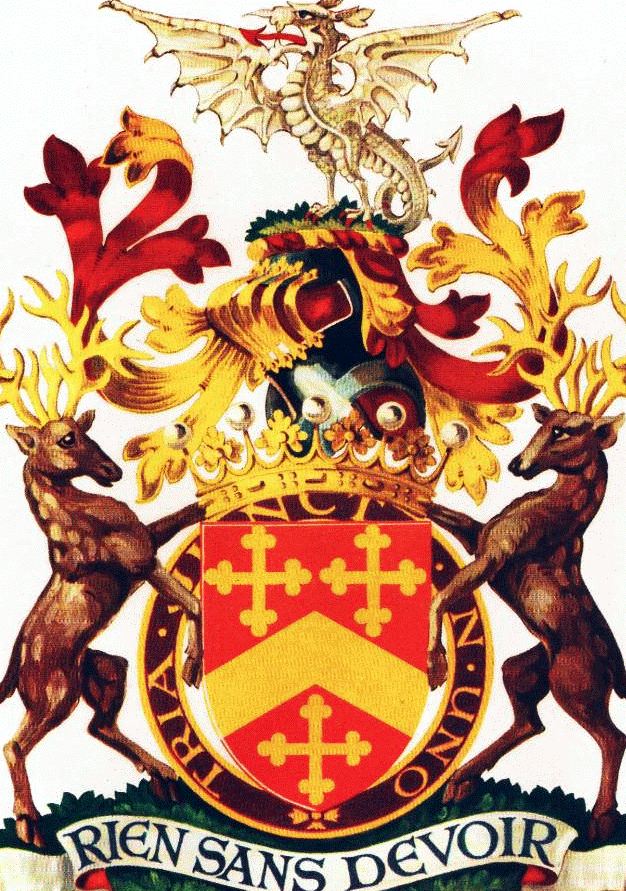
Part of Warwick Parish's crest, from that of the 2nd Earl of Warwick. His coat of arms, copyrighted by his family, members of which still exist today, is exactly what is shown on Bermuda's Warwick Parish crest. Used with exclusive permission from the copyright owners. Do not copy.
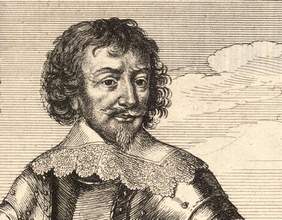
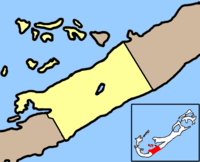
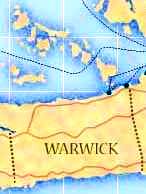
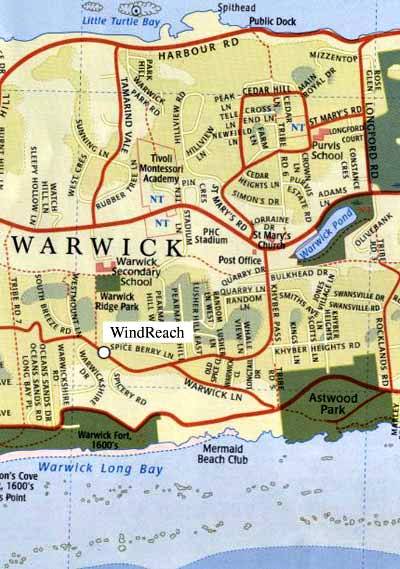 Warwick Parish on Main
Island is the same size of 2.3055 square miles as the other eight parishes. It was named
after one of Bermuda's Elizabethan patrons, Robert Rich, second Earl of Warwick
(1587-1658, see portrait above right). A colonial administrator and admiral, he was the eldest son of
Robert Rich, earl of Warwick and his wife Penelope Rich and succeeded to the
title in 1619. He was the largest original shareholder in Warwick Tribe, later Parish. This
association with the central English county and town of Warwick is overlooked by visitors
unless they are from Warwickshire in England or Warwick in Rhode Island, USA. It is why
the Earls of Warwick were so titled.
Warwick Parish on Main
Island is the same size of 2.3055 square miles as the other eight parishes. It was named
after one of Bermuda's Elizabethan patrons, Robert Rich, second Earl of Warwick
(1587-1658, see portrait above right). A colonial administrator and admiral, he was the eldest son of
Robert Rich, earl of Warwick and his wife Penelope Rich and succeeded to the
title in 1619. He was the largest original shareholder in Warwick Tribe, later Parish. This
association with the central English county and town of Warwick is overlooked by visitors
unless they are from Warwickshire in England or Warwick in Rhode Island, USA. It is why
the Earls of Warwick were so titled.
When young, this Earl of Warwick was decorative. Later, he was heavily involved in colonial ventures early in his career, joining the Bermudas, Guinea, New England and Virginia companies. His enterprises involved him in disputes with the East India Company (1617) and with the Virginia Company, which in 1624 was suppressed through his action. In 1628 he sailed with other privateers and commanded an unsuccessful privateering expedition against the Spaniards. His Puritan connections and sympathies, while gradually estranging him from the court, promoted his association with the New England colonies. In 1628 he indirectly procured the patent for the Massachusetts colony and granted the " Saybrook " patent of Connecticut in 1631. Compelled the same year to resign the presidency of the New England Company, he continued to manage the Bermudas and Providence Companies, the latter of which, founded in 1630, administered Old Providence on the Mosquito coast. Meanwhile in England Warwick opposed the forced loan of 1626, the payment of ship-money and Laud's church policy.
A decade later, the Earl was approached by Samuel Gorton and his followers in an attempt to establish their own colony in lands south of Providence, Rhode Island called Shawomet. Gorton had wanted the Massachusetts Bay Colony to stop its encroachments against him and his followers, and lobbied heavily to the "Governor in Chiefe and Lord High Admiral of the English Plantations in America" for the establishment of a town charter for Shawomet. Rich ruled in Gorton's favor, and, in return, Gorton renamed the town Warwick. After the accession of King Charles, he became a puritan and joined the Parliamentary opposition. His condemnation of illegal taxation led to his imprisonment. In the Civil War, he was a Captain General of the Parliament's Armies and was responsible for the Royal Navy declaring against the King. A friend of Oliver Cromwell, he died in 1658 mourned by the Lord Protector.
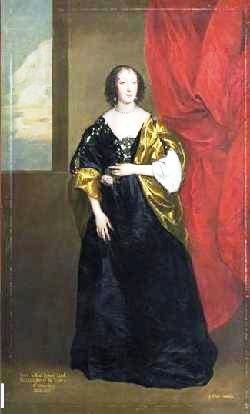 In
January 2009 The Royal Gazette
reported that portrait of a woman whose father was governor of the Bermudas
Company was expected to be sold for as much as $700,000 at auction.
Christie's, in New York, included the 17th century
portrait of Anne Cavendish, later Lady Rich, in its Important Old Master
Paintings and Sculpture Auction that take place in Rockefeller Plaza on January
28.
In
January 2009 The Royal Gazette
reported that portrait of a woman whose father was governor of the Bermudas
Company was expected to be sold for as much as $700,000 at auction.
Christie's, in New York, included the 17th century
portrait of Anne Cavendish, later Lady Rich, in its Important Old Master
Paintings and Sculpture Auction that take place in Rockefeller Plaza on January
28.
The painting was done by Anthony Van Dyck, a Flemish Baroque artist and the leading painter of the English courts, most famous for his portraits of King Charles I, and the auction house estimated its value in the range of $500,000 to $700,000.
His portrait of Anne Cavendish - see left - was painted in 1637, during his second stay in England, and just a year before her death and four years before his own. The painting has an illustrious history of ownership, as seen in the details of provenance provided by Christie's, having been owned by among others, Sir Robert Walpole, Prime Minister of Great Britain from 1721 to 1742. Although Anne Cavendish may herself never have visited Bermuda, strong connections to the island can be found in both her family tree and in that of her husband, Robert Lord Rich.
Anne was born in 1611, daughter of Sir William Cavendish, 2nd Earl of Devonshire (1590 to1628), and her grandfather, also Sir William Cavendish, was the 1st Earl of Devonshire one of the grantees of Bermuda and an original member of the "Company of the City of London for the plantation of the Somers Islands".
Devonshire Tribe and Cavendish Fort were named for him and the Earl of Devonshire is said to have owned 245 acres of land in Bermuda by 1663. Her father, the 2nd Earl, continued in the family business and was governor of the Bermudas Company. In 1632, Anne married Robert Lord Rich, the 3rd Earl of Warwick, who also had strong ties to Bermuda. His father, the 2nd Earl of Warwick, was a manager of the Bermudas Company. Warwick Parish was named for him, its crest taken from his own, and it is said that Warwick Academy was built on land donated by the Earl in mid 17th century.
Anne died in 1638, at the age of 27, mourned in a poem by Edmund Waller and Sir John Denham: "That horrid word, at once, like lightning spread, struck all our ears the Lady Rich is dead! Heart-rending news! And dreadful to those few who her resemble, and her steps pursue." Because the Earl of Warwick never visited, early settlers had their own pet name for the Tribe. They called it Heron Bay because it then had significance to shipping and many herons congregated there. Then, settlers didn't swim, so the northern side of the Parish was more important than the south. Today, there's no area of the Parish with Heron Bay as part of the name. Only in Southampton Parish is there a school and shopping area carrying the name. Nowadays, Warwick Parish is famous for its spectacular South Shore beaches. It is also one of the most densely populated of Bermuda's nine parishes. The islands in the Great Sound north of the mainland are shown as islands in Bermuda National Parks below.
![]()
![]()
See under Bermuda Beaches. On the South Shore, at Rocklands Road. A superb beach for the able-bodied but with steep cliffs, sightings of Bermuda's national bird the longtail (frigate bird, pictured) in season - and open spaces.
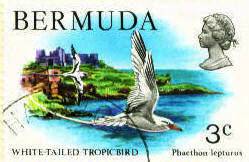
Picnic tables, parking and toilets are included. The park adjacent to the beach is also a great place to observe the annual great migration of seabirds. Bermuda is in the broad northbound migration route used by many species including terns, jaegers, shear waters and storm petrels. Some come from as afar as the Antarctic. The best months of the year to watch these birds are February through July. Like with all other Warwick beaches, the # 7 bus route stops on the South Road nearby.
![]()
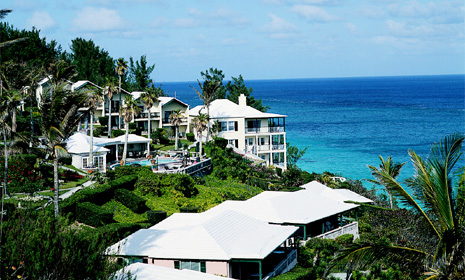

Above: Left, originally as Surf Side. Right: now as Azura
Formerly Surf Side Beach Club. 90 South Road, Warwick Parish.. On the South (Shore) Road at the Paget and Warwick boundary, facing the ocean, this boutique hotel has its own small private beach. On No. 7 public transportation bus route, about 25 minutes by bus from Hamilton and 35 to 40 minutes from the airport. On 5 acres of landscaped oceanfrontl. Five minutes walk to Bermuda Railway Trail. Restaurants are not far.
![]()
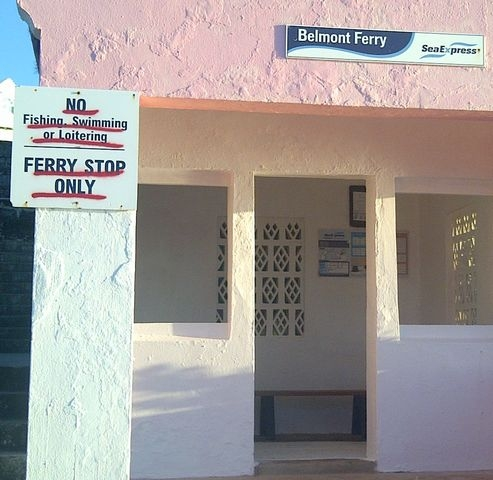
Harbour Road, on the Hamilton to Warwick ferry. It serves residents of the immediate area and visitors staying at hotels nearby not served by buses. It has a gorgeous view of the Great Sound to the west and Hamilton Harbor to the northeast. The nearest island is Hinson's Island.
![]()
Separately named and numbered on a free Bermuda National Parks and Reserves map, available from a Visitor's Service Bureau.
![]()
There is a Warwick Parish portion.
![]()
Tapestry Collection by Hilton
. 111 rooms, scheduled to open after August 2020.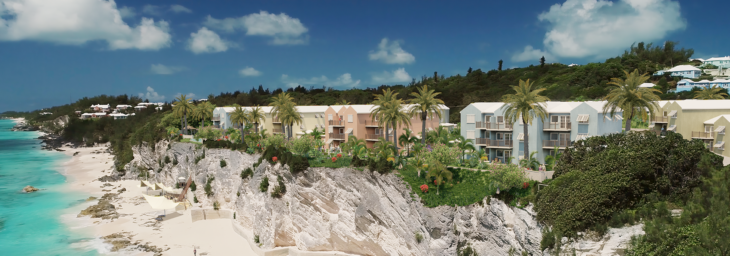
Formerly the proposed Grand Atlantic Resort and Residences. Grand Atlantic was launched by an earlier Progressive Labour Party government in 2011 as a hotel and affordable housing development. But the scheme was branded a failure when only two out of the 78 condo homes were sold and the hotel was never built.
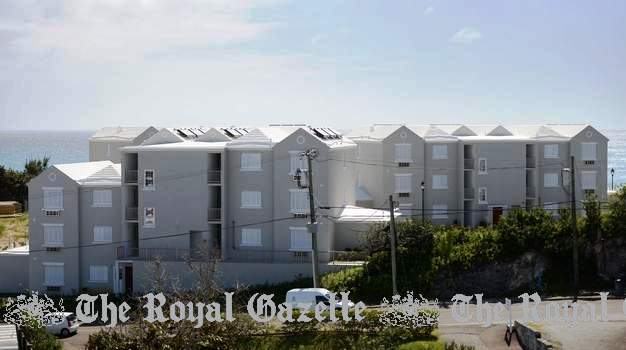
Government's failed Grand Atlantic condominium complex
![]()
Protruding into the Great Sound, this is part of the peninsula that includes the Riddle's Bay Golf course and club. The name derives from when, in 1822, Scottish schoolmaster William Burgess went to live there. A lovely Bermuda private home by this name is on the point, one-acre, listed for sale in 2012 to Bermudians and non-Bermudians at $7 million, with a large dock, beach and pool.
![]()
A residential area partly overlooking the Great Sound. In 1614 there was an invasion of rats from a ship which had brought grain, with by 1616 the rats too numerous in a number of areas to be caught by cats, dogs or traps. The rats also nested in the trees. Early colonists decided to burn the land to flush out the vermin. It was a partial success. Although not the only place to be burned this is the only place left in Bermuda that still bears the burnt name. Not long afterwards, the remaining rats infestation, both here and elsewhere, almost completely disappeared, culled by the effects of a particularly bad and cold winter. In 1859, on February 2. A seven-year-old girl accidentally set fire to dried brush and palmetto leaves while lighting Samuel Tacklyn Jr’s cellar fireplace in their Warwick home at the bottom of a hill, on the waterside. The house went up in flames. Four young children died, including two who were locked in upstairs, while their caregiver was out. The remains of the burnt house remained on the hill for many years. In the 1930s, an American bought the property and built a new house, calling it Burnt House after its original burnt history. The hilly road later became known as Burnt House Hill.
![]()
![]()
An estate named after Sir Charles Chaplin, Lady Oona Chaplin (daughter of dramatist Eugene O'Neill) - and their family who once owned the Chaplin Estate in this parish. After Chaplin died, his widow Oona, born in Bermuda (see under Spithead House) asked for special environmental protection (Zone 34) to protect woodland in return for allowing her to subdivide her estate for homes to be built in the 1990s.
![]()
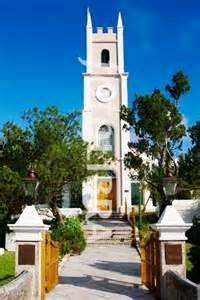
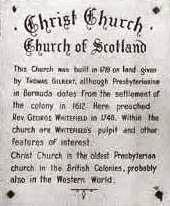
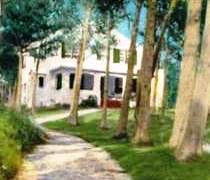
Middle Road, opposite the Belmont Golf Course. The # 8 bus stops on the Middle Road nearby. Now a Scottish Presbyterian church - Church of Scotland - but built in 1719 as an independent Presbyterian church. It is one of the oldest Presbyterian churches in the Western Hemisphere. On Sundays, morning service is at 8 am and 11 am. A glossy 180 page paperback, available from the church after Sunday service, titled "Presbyterians in Bermuda" covers 1609 to 1984. The pulpit and old churchyard are interesting. It tells of what was Warwick Presbyterian Church before it became Christ Church, written by Joseph H. S. Frith, then an Elder, and edited by the Rev. A. B. Cameron, DD. and published in 1911, in Edinburgh, Scotland, by the Darien Press. From 1745 when the main house there was built, Ministers of Christ Church lived there on Southlands estate. During the late 1700s, when Warwick Academy fell into disrepair, the ministers taught the pupils at Southlands. Christ Church is actually English in its origin - taking its life from those English Puritans who early in the seventeenth century colonized Bermuda. It was built in 1719 on land given by Thomas Gilbert of Warwick Tribe. Additions and alterations have been made, but the original walls remain. Although there is evidence of much earlier association with the Church in Scotland, and preference had always been shown for Scottish ministers, it was not until 1843 that the congregation took steps to become part of the Free Church of Scotland. In 1929 Christ Church, which had been with the United Free Church of Scotland since 1900, became a part of the Church of Scotland, and formalizing its relationship with The Church of Scotland as a full member in 2001. It became a member of the Presbytery of Europe in May 2008.
![]()
Cobb's Hill. Phone 236-8586. Built from 1825 to1927 by free blacks and former slaves on land donated for that purpose by liberal-minded white Chief Justice John Christie Estern, also a Methodist sympathizer who had noted with distaste the treatment in 1800 of the first Methodist preacher in Bermuda.
2020. February 6. A cultural tour has been launched to show off the rich heritage of one of Bermuda’s oldest churches. Cobbs Hill Methodist Church, in Warwick, which was built mostly by moonlight by enslaved black people and free black Bermudians in the 1820s, is now part of a special tour designed to highlight the country’s rich African heritage. Titan Express, a bus tour operator, offered the tour to mark Black History Month. The Department of Community and Cultural Affairs became involved and provided an online booking service. Glenn Jones, of the Bermuda Tourism Authority, said: “As tourism industry developers, our goal is to inspire experiences that fill gaps in the visitor experience and stimulate spending. Cobbs Hill Methodist Church, Titan Express and the Department of Community and Cultural Affairs are filling a cultural tourism gap with this offering. It is online bookable and easy to access.” The church has been part of the African Diaspora Heritage Trail since 2002, but until now visitors on the trail have not often been able to see the inside of the church or hear the story of its history. The new tour, along with an existing one by Bermuda Island Tours, will let tourists and residents become more engaged and better informed about the church. The tour came after the BTA organised a dinner last month where guests were given a short tour of the church’s sanctuary and Bermudian actors recounted the origins of the place of worship. Mr Jones said: “On the heels of our event with Cobbs Hill Methodist Church, we are delighted to have a new experience that gives visitors easy access to this part of Bermuda’s fascinating history.” Lovitta Foggo, the community affairs minister, added: “Bermuda has a rich and exciting heritage that we believe should be experienced by all visitors who travel to the island. The legacy of Cobbs Hill Methodist Church forms a critical foundation of our history.” The Titan Express tour, which costs $15 per person, runs on Saturdays this month and next month. Other stops on the tour include the Sally Bassett statue at the Cabinet Office and the pre-emancipation graveyard at the landmark rubber tree at Khyber Pass in Warwick.
2019. August 23. A new home is being sought for an antique organ from this historic Bermuda church built by enslaved worshippers. The organ at Cobbs Hill Methodist Church dates back to around 1883. “It carries a lot of our history with it,” said church elder Earlston DeSilva. Mr DeSilva added: “It has a beautiful sound, but we have not been able to play it for some time.” The church in Warwick, which dates back to 1827, is Bermuda’s oldest standing Methodist building. A group photograph on the wall showing the centennial includes the preacher Thomas Stowe Dill, who is the great-grandfather of Mr DeSilva as well as Sheila Conyers, an adherent member. Ms Conyers said of the organ: “That’s my baby. My mother was an organ player for 50 years; it’s beautiful and powerful. But to have something that we can play, I would suggest something like the organ at the Peace Lutheran Church, which can convert to a piano.” Edna Simmons, the church secretary, said: “It’s difficult for us to part with it, because it’s a treasure. But we have to go with the times.” The church has 22 core members, but every week is joined by visitors both local and overseas, drawn by its history. That history has influenced the neighborhood around it: Moonlight Lane, where the church stands, takes its name from slaves building the edifice by moonlight. The corner down the hill at Middle Road is nicknamed Amen’s Corner from the sound of singing from the church. Ms Simmons credited the African Diaspora Heritage Trail, a charity dedicated to Bermuda’s African history, for bringing visitors and tours. Gloria Ray, chairwoman of the trustee and management committee, said the congregation had decided on a new instrument as part of “trying to modernize”. She added: “We don’t have anybody to play it; a lot of people can’t use the foot pedals. If it could be sold, we would gladly accept that.” They estimate that a modern keyboard organ could cost the church up to $25,000. Berlene Smith, the deputy chairwoman, said: “We have had people from the National Museum of Bermuda come to look at it and we are hoping they can take it. They will have to have a meeting of their board before any decision is made. It would be great at the museum because it would fit so well.” The decision remains a difficult one. Mr DeSilva said: “As we move it, we are moving out part of our history.” The organ was built by William Henry Davis & Son of New York City. Its first home in Bermuda was believed to be Christ Presbyterian Church in Warwick. In about 1900, it went to Grace Methodist Church in Devonshire, and was acquired by Cobbs Hill Methodist Church in 1957. It was dismantled and restored in 1988.
![]()
![]()
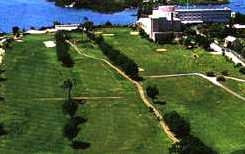
97 Middle Road, WK 09. Telephone (441) 236-6400 or 236-1301 extension 7951. Fax (441) 236-6867. A spectacular 18 hole par 70 course. Facilities include a pro shop, snack bar and restaurant. It quite recently became a slightly over 6,000 yards - more challenging, less hazardous and more attractive course. After draft plans for the revamp by corporate organizations owned by Greg Norman and Jack Nicklaus were both rejected, one by Californian Algie Pulley was accepted. Pulley had earlier carried out improvements at the former Castle Harbour course. This one has greens made faster by Tiff-Eagle sprigs, fairways made more lush by an irrigation system and two man-made lakes separated by a waterfall which help facilitate irrigation. The lakes, in an area between holes 2, 7 and 8, are a centerpiece. They help steer golfers away from residential areas. To reduce the hazards, the current par-3 fourth, where players in the past often sliced right into adjacent houses, was eliminated and the eighth, where balls were often sent into Warwick Villas to the right, also underwent a change of direction. Holes 1 and 2 remain much the same but the third dog-legs up towards a new green just below the existing 4th green. The original 5th hole became the 4th and the original 6th the 5th, with a new green further to the left than before. The original 7th become a new par-five 6th winding its way through the lakes, where the 7th is a new par-3. Rather than a dog-leg, the 8th is short, tight and straight and 9th almost the same but with the green moved slightly to the left with a new clubhouse built to the left. The old 10th became the 15th and 11th is where the 14th was. Both have new greens. The par-5 10th became an even longer 12th, with a new green on the original 11th fairway. The 11th became the 13th, a straight par four over the existing "Ian Crowe" lake. With safety in mind, the old 12th became the 14th, directed away from houses to the right. The 15th, 16th, 17th and 18th remain much as they were, except the 16th has a new green 30 feet to the left to take play away from homes on Belmont Road.
For visitors who arrive on one of the cruise ships, the closest cruise ship berth used to be (until 2007) the City of Hamilton, about 5 miles away to the east, but is now Dockyard, about 8 miles away. If you bring your own clubs, you won't be able to go by public transportation (bus). Instead, take a taxi. Buses go only to nearest stop about a mile away. Check rates directly with course depending on time of day and time of year. Private but will accept off-the-street golfers by prior appointment. Ask about playability on the day you have in mind.
![]()
![]()
Directly after the Warwick gas station, opposite the Warwick Lane Bowling. There is a small road between the gas station and the Eliza Doolittle building. Opened in December 2008 by the Bermuda National Trust with a ceremony attended by the Governor Sir Richard Gozney and his wife Lady Gozney. It was left to the Trust by the late Gloria Higgs in 1984, and has since been transformed by the family of the late Sir John 'Jack' Sharpe. The main attraction of the park is Jack's Pond, named for Sir John. Designed by former Government Conservation Officer David Wingate, it preserves a portion of the original peat marsh with a habitat for rare flowers. Members of Sir John's family planted native plants and spreading grass seed resulting in the flourishing reserve seen today.
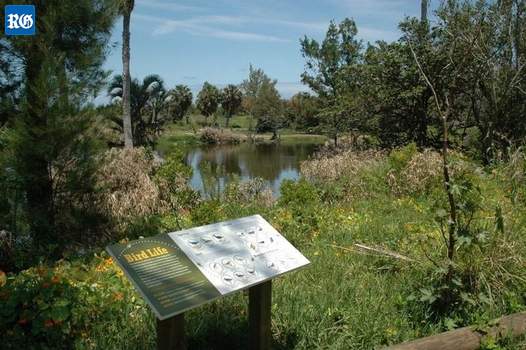
![]()
| Alpha | 100 yards southwest of Hawkins Island, Hamilton Harbor. |
| Beta | Great Sound |
| Bluck's | 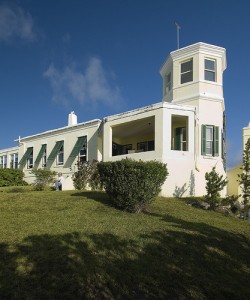 Also Denslow's
or Dyer's. Great Sound, Warwick Parish. It was referred to as Denslow's
as Philadelphia-born American cartoonist and illustrator William Wallace
Denslow (1856-1915) - who illustrated The Wonderful Wizard of Oz written by L. Frank Baum -
once built a turreted castle-like house there in 1903, renamed the
island after himself and announced himself thereafter as King Denslow I. He
also bought himself a Bermuda sailboat which he named "Wizard"
and created a dock for it from the house. From 1903 he did much of his
work from his studio at this house. He bought the island from the
profits he made from illustrating L. Frank Baum’s classic “The
Wonderful Wizard Of Oz” (later shorted to "The Wizard of Oz"
book, published in 1900, which became an instant cultural world-wide hit
and created first the play and then the movie. The children’s book
sold tens of thousands of copies and quickly spawned sequels, a
theatrical adaptation and cartoon strips. Later, he quarreled
bitterly with his former collaborator Baum. Denslow and Baum. Both
claimed “The Wonderful Wizard of Oz” as their own. They almost
simultaneously launched competing syndicated newspaper stories that ran
in the Sunday comic sections around America and Canada. Denslow designed
from his studio in the turret of his Bermuda house his own illustrated
cartoons, Denslow’s "Scarecrow and Tinman" which began in
December 1904, one of which was known as "Denslow's Scarecrow and
Tinman in Bermuda. " The series was short-lived, ended in March
2005. Denslow's sojourn in Bermuda also inspired the setting of a book
and play. He worked on them from here. Set in both Bermuda and Vermont
and an enchanted underwater fairyland was his “The Pearl and the
Pumpkin” - a 1904 Halloween-themed children’s book co-written
by Paul Clarendon West and illustrated by the artist. Denslow hoped to
replicate the popular success of “Wonderful Wizard Of Oz” with a
1905 stage adaptation of the well-received book. One scene had a Bermuda
lily field with chorus members dressed as lilies and a scene off North
Rock. It received lavish praise from the New York Times. But the play
did not find a receptive audience and closed shortly after its Broadway
premiere. After the failure of his considerable investment in the
musical version of “The Pearl and the Pumpkin”, by 1908 the
self-crowned King Denslow I decided to abdicate and abandon his
mid-Atlantic realm. On June 8, 1908, in New York, realtor Carl E.
Randrup negotiated a sale of Denslow’s Island, with its large stone
residence, cottage and other outbuildings. The buyer was a New Yorker,
who wanted to make the place his Winter residence. The price was
$30,000. Denslow — who was married and divorced three times — began
drinking heavily and had difficulty landing secure employment after
leaving Bermuda. He moved to Buffalo, New York and found work with the
Niagara Lithograph Company designing promotional pamphlets. He
eventually drifted to New York City around 1913, finding work at another
advertising agency where the one-time lord and monarch of his private
island earned just a fraction of his former income. Also Denslow's
or Dyer's. Great Sound, Warwick Parish. It was referred to as Denslow's
as Philadelphia-born American cartoonist and illustrator William Wallace
Denslow (1856-1915) - who illustrated The Wonderful Wizard of Oz written by L. Frank Baum -
once built a turreted castle-like house there in 1903, renamed the
island after himself and announced himself thereafter as King Denslow I. He
also bought himself a Bermuda sailboat which he named "Wizard"
and created a dock for it from the house. From 1903 he did much of his
work from his studio at this house. He bought the island from the
profits he made from illustrating L. Frank Baum’s classic “The
Wonderful Wizard Of Oz” (later shorted to "The Wizard of Oz"
book, published in 1900, which became an instant cultural world-wide hit
and created first the play and then the movie. The children’s book
sold tens of thousands of copies and quickly spawned sequels, a
theatrical adaptation and cartoon strips. Later, he quarreled
bitterly with his former collaborator Baum. Denslow and Baum. Both
claimed “The Wonderful Wizard of Oz” as their own. They almost
simultaneously launched competing syndicated newspaper stories that ran
in the Sunday comic sections around America and Canada. Denslow designed
from his studio in the turret of his Bermuda house his own illustrated
cartoons, Denslow’s "Scarecrow and Tinman" which began in
December 1904, one of which was known as "Denslow's Scarecrow and
Tinman in Bermuda. " The series was short-lived, ended in March
2005. Denslow's sojourn in Bermuda also inspired the setting of a book
and play. He worked on them from here. Set in both Bermuda and Vermont
and an enchanted underwater fairyland was his “The Pearl and the
Pumpkin” - a 1904 Halloween-themed children’s book co-written
by Paul Clarendon West and illustrated by the artist. Denslow hoped to
replicate the popular success of “Wonderful Wizard Of Oz” with a
1905 stage adaptation of the well-received book. One scene had a Bermuda
lily field with chorus members dressed as lilies and a scene off North
Rock. It received lavish praise from the New York Times. But the play
did not find a receptive audience and closed shortly after its Broadway
premiere. After the failure of his considerable investment in the
musical version of “The Pearl and the Pumpkin”, by 1908 the
self-crowned King Denslow I decided to abdicate and abandon his
mid-Atlantic realm. On June 8, 1908, in New York, realtor Carl E.
Randrup negotiated a sale of Denslow’s Island, with its large stone
residence, cottage and other outbuildings. The buyer was a New Yorker,
who wanted to make the place his Winter residence. The price was
$30,000. Denslow — who was married and divorced three times — began
drinking heavily and had difficulty landing secure employment after
leaving Bermuda. He moved to Buffalo, New York and found work with the
Niagara Lithograph Company designing promotional pamphlets. He
eventually drifted to New York City around 1913, finding work at another
advertising agency where the one-time lord and monarch of his private
island earned just a fraction of his former income. |
| Burt | Warwick Parish. (Warwick North Central constituency). Also Moses, Murderer's, Skeeter's. 7.75 acres, Granaway Deep, Great Sound. Not accessible by ferry, only to those with a boat. Number 14 on Government listing of Bermuda National Parks and Reserves. |
| Darrell's Island | Warwick
Parish. (Warwick North Central constituency). Not accessible by ferry,
owned by the Bermuda Government. See it from western Harbor Road. This
15 acre island in the Great Sound has a unique history. It was once a
quarantine station for epidemics in 1699, 1796 and 1799 of small pox,
yellow fever and cholera. It was a
designated prisoner of war Island Camp during the 1901-1903
Boer War. Its 1,100 involuntary inhabitants shipped to
Bermuda from South Africa to isolate them included Generals of the Boer Army. Many of
these prisoners of war died in Bermuda. A memorial to them is on Long Island not far away.
In 1936, the
island was a purpose built maintenance, refueling station and terminal for flying boats
of Pan American and Imperial Airways. The airport here was the base for and
pioneered scheduled USA to
Bermuda flying routes. It was Bermuda's first permanent facility for any kind of
aircraft. On May 25, 1937 the Imperial Airways' Short Empire C
class flying boat RMA Cavalier took off from the unofficially opened and not quite
finished Darrell's Island Marine Air Terminal in the Great Sound, for New York. At the same time, the Pan American
Airways' Sikorsky S-42, code of NC 16735, by then renamed by Mrs. Trippe as Bermuda
Clipper, also flew from Port Washington, NY to Bermuda.
She did a successful reciprocal survey of the route. On June 12, 1937 the million dollar terminal building at Darrell's Island Airport was formally opened. Bermuda become THE mid Atlantic seaplane and flying boat airport base and resort. It was also the date of the inaugural flights of the Cavalier and Bermuda Clipper. Both landed safely. Both flying boats took off from Port Washington, New York. RMA Cavalier was commanded by Capt. Neville Cumming, with co-pilot First Officer Neil Richardson, radio engineer Patrick Chapman, and steward Robert Spence. Bermuda Clipper was commanded by Capt. R. O. D. Sullivan. Passengers on this particular flight included Mr. John Barritt of John Barritt & Son Mineral Water Company; Major Neville, a staff officer at Admiralty House; Mr. E. P. T. Tucker, General Manager of John S. Darrell & Co.; Mr. E. R. Williams of J. E. Lightbourn & Co. (who later became a Mayor of Hamilton); Mr. H. B. L. Wilkinson, of Bailey's Bay; Miss Minna Smith, a nurse at King Edward VII Memorial Hospital; Mr. Terry Mowbray, Sports Director of the Bermuda Trade Development Board; Mr. & Mrs. Richard Scott of Boston, returning from their honeymoon in Bermuda; and Mr. Eugene Kelly, Mrs. Alice James and Mrs. John Fullarton, all of New York. Later, in support of the two airlines and in anticipation of much more communications traffic, the West India and Panama Telegraph Company Ltd - in conjunction with Britain's Imperial & International Communications - installed an internal teleprinter system between the airlines' offices and the Air to Ground station. Darrell's Island served in a similar capacity for Royal Air Force, Royal Canadian Air Force and US Army Air Force flying boats during World War 2. During the war, American use of Bermuda as a military base caused their desertion of this island for the land based airport they built. From June 1954 for several years, the island was used as a film studio location. The old flying boat hanger was demolished in 1974. Then it became a residential island. Most of it later got taken over by the Bermuda Government. Nowadays, part of the island - Darrell's Island West - is the Allen Camp, operated by the African Methodist Episcopal Churches, at telephone 234-0433. |
| Delta | A small island in the Great Sound, north of Burt Island and directly south of Nelly Island, between Gamma and Epsilon. Not accessible by ferry, only to those with a boat. |
| Epsilon | Very small, south west of Port's. |
| Eta | Not accessible by ferry, only to those with a boat. During the Boer War, prisoners of war on work parties crossed from Port's to Long and the other way around via a wooden footbridge on this island. Privately owned. |
| Fern | Warwick Parish. (Warwick North Central constituency). Also known as Sin, Hamilton Harbour. |
| Gamma | Warwick Parish. (Warwick North Central constituency). A mere dot, South of Nelly Island. |
| Grace | Also known as Robbins, 5.9 acres, Great Sound, Warwick Parish. Owned by Bermudian millionaire and philanthropist Mr. Fernance Perry, who has the Grace Island Trust. Birds such as the blue heron make it their home. There was a Christian camping site in facilities finished in 2000, the Word of Life Summer Teen Camp, in part of every August. Contact it at (441) 234-4648. |
| Hawkins | Warwick Parish. (Warwick North Central constituency). Originally Elizabeth's or Tatem. 5 acres. Great Sound. Re-named after the Royal Navy bought it in 1809. It is not a National Park because it is now privately owned. It's not easily seen in the Great Sound because it is the most easterly of the large group of islands stretching across the center, well hidden behind Darrell's, Burt's, Delta, Gamma, and Beta Islands. It was a Boer War prisoner of war camp from 1901 to 1902. It housed as many as 1,300 prisoners in bell tents. There is no ferry service or public access. But there are privately-run trips. |
| Iota | Not accessible by ferry, only to those with a boat. Privately owned. |
| Kappa | Not accessible by ferry, only to those with a boat. Privately owned. Now joined to Long Island. Kappa Rock lies between Hawkins and Long Islands. |
| Lambda | Great Sound, north west of Hawkin's and between it and Omega. |
| Long | Warwick
Parish. (Warwick North Central constituency). Once known as Sheep, in
that part of the Great Sound known as Paradise Lake. Historically
important. Not accessible by ferry, only to those with a boat. Once a
British Army military burial ground for yellow fever victims it later
became a prisoner of war Island Camp during the Boer War in 1901 to
1902. Its 1,100 involuntary inhabitants shipped to Bermuda from South
Africa to isolate them from their homeland included Generals of the Boer
Army. There's a poignant stone memorial to them this island where 40
died and were buried.
An official from the government of South Africa visited here in 1998. Among the distinguished visitors to the Boer Cemetery were former South African Presidents Thabo Mbeki and F.W de Klerk. Mr. Mbeki was in Bermuda for secret talks with South African political opponents in 1989 and had traveled from his exile base in Tanzania. Mr. de Klerk visited in 1997. On May 1, 2000, Dr. Nina de Klerk, sister in law of former South African President F. W. de Klerk, visited the island. Her family was actively involved in the Boer War. Prominent Bermudian businesspeople have private cottages or land on the island. |
| Marshall's | Warwick Parish (Warwick North Central constituency). Privately owned, residential. A large double island, between Hinson's and Long Islands. Its two parts are linked by a narrow isthmus. It was one of the islands purchased in 1809 by the British Admiralty for the Royal Navy. Now owned by Bermuda-based businessman Peter Green. |
| Nelly | Not accessible by ferry, only to those with a boat. Great Sound, south of Hawkin's and adjacent to Long. Privately owned. |
| Ports | 20 acres. Warwick Parish. South of Long Island, Great Sound. Not accessible by ferry, only to those with a boat. Privately owned. Historically important. In 1692, after yellow fever first arrived from the Caribbean and killed 800 people - 10 percent of the entire population at that time - this was the first island used to isolate them after their pets were killed. Yellow fever came to the colony many times. A yellow fever cemetery is still here. Prisoners of war were held in isolation here during the War of 1812 to 1814, Boer War of 1901 to 1902 and from 1914, August 4 when WW1 was declared, there were three German nationals living in Bermuda. They were arrested and interned for four years on Ports Island, along with 58 German merchant seamen who were working on various ships on the island. There were German officers and crew members on vessels including the Bermudian, Caribbean, Cayo Soto, Chaleur, David Biird, Leda and Vestland. Ports Island was the logical choice for their confinement with its hospital buildings constructed in 1901 for incoming Boer War prisoners and used as such until 1902. The prisoners, all civilian, no military, grew vegetables to supplement their diet and spent most of their time making souvenirs which were sold locally. Some were boxes but most were curios associated with the sea. All the pieces were marked GPOW Bermuda with the silhouette of a palm tree. Captain Charles P Pitt, Assistant Provost Marshall of Bermuda, of the Bermuda Volunteer Rifle Corps (BVRC), was Commandant of the POW camp. 20 men of the BVRC, led by Colour Sergeant A Haskell, guarded the prisoners. An NCO from the Royal Army Medical Corps provided first aid and treated minor ailments of prisoners. Any with serious illnesses were sent to the British Army's military hospital at Prospect. On Ports Island, most of the Germans were housed in a compound consisting of officers quarters, mess and kitchen, with similar but more basic accommodations for other ranks. Some elected to live in bell tents. With a campsite, permission in advance directly from the Bermuda Government's Department of Youth, Sport and Recreation. Only one group at a time. |
| Pearl | Great Sound. It has a weather station. |
| Rickets | Between Burt's & Grace Islands, Great Sound. |
| Theta | Not accessible by ferry, only to those with a boat. Privately owned. Between Marshall's and Long Islands in the Great Sound. |
| Watling | One-property residential, near Hinson's and Bluck's in the Great Sound. |
| Zeta | Warwick Parish. (Warwick North Central constituency). 1.5 acres, south of Port's, Great Sound. It is named for the sixth letter of the Greek alphabet. |
1 Harbour Road, PG 01, or P.O. Box PG 176, Darrell's Wharf, Paget PG 01, Bermuda. Reservations 1-441 232-5700. Hamilton Harbour waterside rooms and suites with kitchens, walk-in closets, separate eat-in kitchen and dining rooms and private balcony suitable and priced for executive business stays. Rooms and suites come with a fully-stocked refrigerator/bar, laptop safe, Smart TV and a work station with a G-link for electronic devices. The City of Hamilton is 2 miles away, accessible by car, public transportation bus not far away or ferry nearby. Once the site of and constructed partly from the famous and original full-service including nightclub Inverurie Hotel, a huge Bermuda favorite in the 1950s and 60s, so-named by its original owner, a Scotsman, after his home town. It later became the Palm Reef Hotel, then the Wharf Executive Hotel (opened July 10, 2002 as a 15-suite boutique hotel) and now Inverurie Executive Suites.
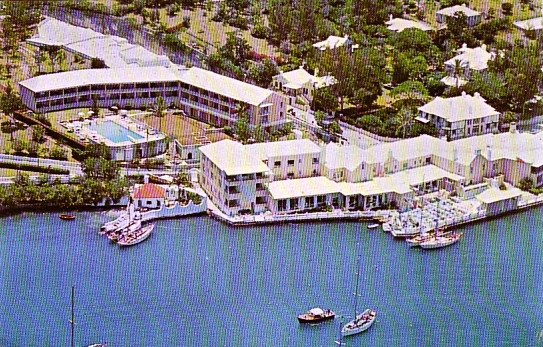
Replaced this lovely old Inverurie Hotel above.
![]()
South Shore, off South Road. Public beach and inlet. An extension of Warwick Long Bay. Named after 17th-century owner, the colonist and planter William Jobson who died in the parish in 1688. The beach and inlet were purchased by him in 1644 from a William Page. Very attractive and secluded. Another great favorite among Bermudians. Great for a picnic, swimming and snorkeling. Rock (cliffs) encircled, thus separated from the sea. Suggestion, take Bus 7 to Warwick Long Bay, adjacent, separated from this beach by a massive area of rock then walk on the trail. Sandy trails cross the dunes and are often used by horse riders. Calm and shallow clear waters for some distance at low tide. No bathrooms (toilets) but available at Warwick Long Bay.
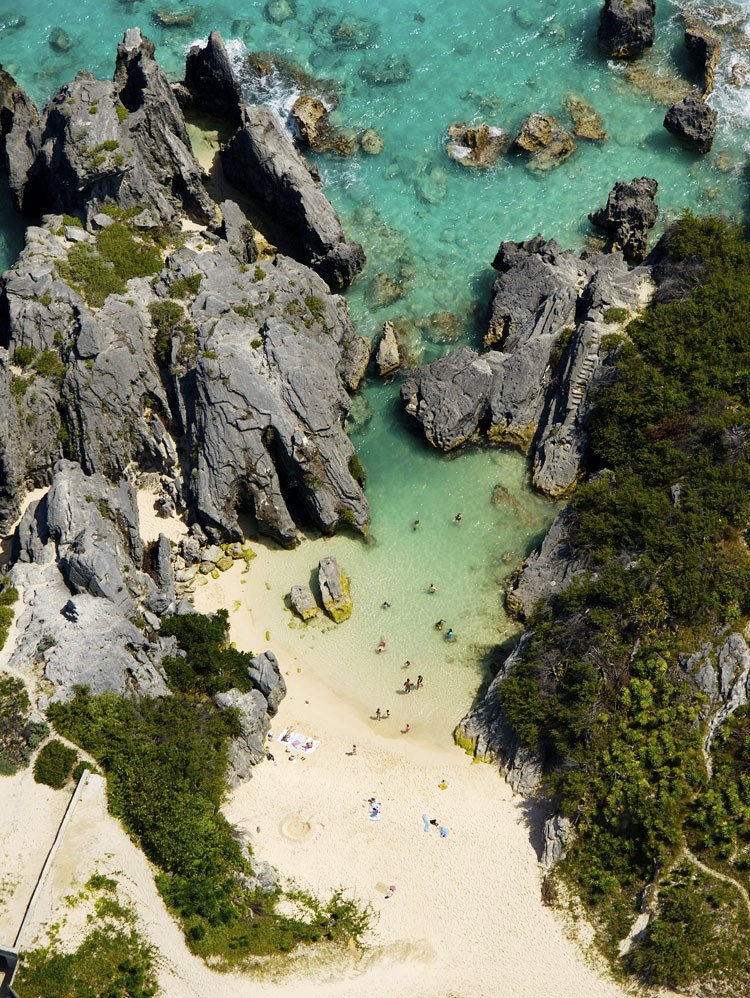
Jobson's Cove. Photo Bermuda Tourism
![]()
Khyber Pass here in Bermuda (unlike the main one in Afghanistan, see below) is a large limestone quarry near the local section of the Bermuda Railroad Trail. Once it was a principal site for Bermuda stone for homes and other buildings. Its upper cliff patterns were formed mostly by tools of the hand-held variety. The lower patterns were formed by stone cutting machinery. Most of the older buildings still around today were built with Bermuda limestone cut by a long hand saw pushed and pulled by two people and then carried away by a horse drawn cart from this very quarry. Nowadays, Bermuda limestone blocks are very expensive and are not used much for that reason. Concrete blocks are cheaper.
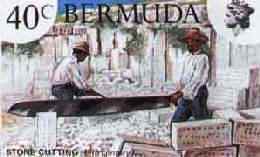
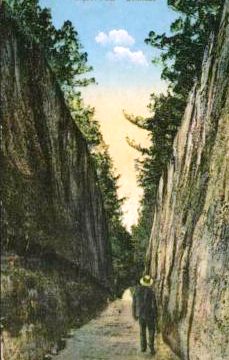
Stone cutting at Khyber Pass. As portrayed on both a Bermuda Postage stamp and a 1950s postcard.
It got its name from when the Second Battalion, 56th Regiment (West Essex) was based in Bermuda. This is the regiment the First Battalion of which was virtually annihilated in 1841 at the Khyber Pass in Afghanistan after a disastrous retreat from Kabul. The lone survivor was the surgeon, Doctor Brydon, who was half dead when he reached Jallabalad with the news. So when the recomposed regiment reached Bermuda, its first overseas posting afterwards and intended more as a rest cure following action overseas, its military reputation ensured that several areas of Warwick Parish - Khyber Pass itself plus Khyber Heights Lane, Khyber Heights Road and Khyber Pass Road - and a street in the old town of St. George, near Fort George - got named after Khyber Pass. Sadly, the Second Battalion also fared badly in Bermuda. In 1853, nearly 230 of its officers and men died in Bermuda from Yellow Fever.
![]()
Named after the house by that name on the road, which in turn is named after a very pleasant town in the center of Ireland (Republic of). Of interest for both reasons. The road itself connects Middle Road with Harbour Road.
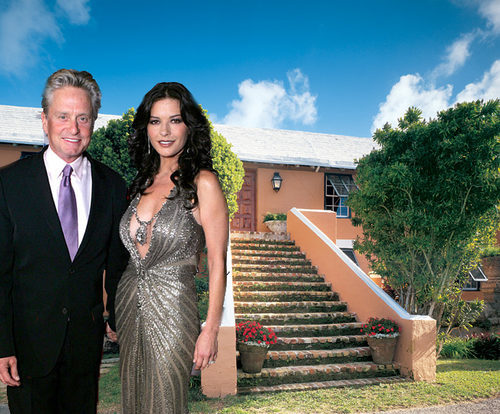 Longford House, Longford Road.
The three-acre property is listed for its historic and architectural importance.
It is a four-bedroom, 7,381-square-foot main house with a "children's
suite," as well as a split-level guest cottage, a fruit grove, a tennis
court, and a secret garden with hot tub. It was purchased in 2001 for $2.5
million by Oscar winners and film stars Michael Douglas, and his wife the
beautiful and talented actress and prominent film star, Welsh-born Catherine
Zeta Jones, 47 in 2016. They were full-time Bermuda residents from 2002 to
his illness in 2009.
Longford House, Longford Road.
The three-acre property is listed for its historic and architectural importance.
It is a four-bedroom, 7,381-square-foot main house with a "children's
suite," as well as a split-level guest cottage, a fruit grove, a tennis
court, and a secret garden with hot tub. It was purchased in 2001 for $2.5
million by Oscar winners and film stars Michael Douglas, and his wife the
beautiful and talented actress and prominent film star, Welsh-born Catherine
Zeta Jones, 47 in 2016. They were full-time Bermuda residents from 2002 to
his illness in 2009.
London-based decorator Stephen Ryan was engaged to infuse the space with a feel that combined quintessentially English with quintessentially Bermudian. Douglas is American-born his late (mother was the former actress Diana Dill Webster, once Kirk Douglas's wife, later a Darrid and then Webster by marriage. She was Bermudian from a prominent and wealthy family who have lived in Bermuda since 1610 but made her home in the USA with her American husbands. The Dill family also owns the Brighton Hill Nursery across the street and up the hill to the right. Another owner was Laurence Dill, who died in late November 2000 at the age of 91. He lived in an historic private home, "Belhaven" in Devonshire, south east of Brighton Hill Nursery. He was an uncle of Michael Douglas. He was a talented local composer and pianist.
After his mother and father divorced, Michael Douglas lived for a time on the US East Coast and received an allowance from his mother and step father, William Darrid. He is an iconic film star, actor and producer, 72 in late September 2016. He won his brace of Oscars for performing in Wall Street and producing 1975's One Flew Over The Cuckoo's Nest. She was brought up in a small, mostly Catholic, Welsh coastal fishing village and has a Catholic repugnance to divorce. Michael Douglas has a brother Joel in the USA. His grandfather Colonel Thomas Dill was Bermuda's Attorney General. They are the half brothers of Eric and Peter Douglas by Kirk Douglas and his later wife, Anne Buydens. Michael had his first birthday in Bermuda. Eric is an actor and comedian and Joel and Peter are producers. Before his marriage to Catherine, Michael Douglas was married for 18 years to producer Diandra Douglas, with whom he had a son, Cameron Douglas, an actor. He and wife Catherine became engaged in January 2000, had a son, Dylan, in August, 2000, got married three months later in New York and now also have a daughter, Carys Zeta, born in April, 2003.
In August 2016 it was listed for sale. Earlier, Michael Douglas and Catherine Zeta-Jones had wanted $28K a month rent.
![]()
The Warwick Parish section of this main road. It starts just east of the junction with Camp Hill Road and the Heron Bay Plaza. It has many interesting attributes, showing off much of typical urban, suburban and rural Bermuda. It's the only complete Parish stretch of any main road in Bermuda that is completely inland, meaning you won't see any views of open water once you start out from the westernmost point near Camp Hill Road. You'll pass Burnt House Hill on your left, St. Anthony's Roman Catholic Church on your right, a trio of interesting residential side streets on your left, St. Mary's Parish church on your left, Warwick Pond on your right, the Belmont Golf Course on your left, Christ Church on your right, and more of the Belmont Golf Course on your right. Eventually, you'll pass Warwick Academy on your left and come to Amen Corner (the junction with Cobb's Hill Road). This marks the boundary between Warwick Parish and Paget Parish. The # 8 bus route services the entire Warwick Parish area of Middle Road.
![]()
![]()
Middle Road, Warwick, in the former White's supermarket. Owned by The MarketPlace. Almost twice as big as the original warehouse-style outlet at Mill Reach Road in Pembroke. There is 13,000 sq ft of retail space, predominantly focused on bulk food items, including a large section with vegetables, frozen foods, fresh and frozen meats, and an alcoholic drinks section. Elsewhere in the store there are electronics, including flat-screen televisions, household items and a range of toys. In line with customer demand, bulk food items are the main focus, however, there is a sizeable selection of more general items that are harder to come by in Bermuda.
![]()
See Bermuda Cuisine.
![]()
Named after a now-extinct Scottish family headed by William Riddell who owned most of the land area of the bay in the early 18th century. Also known as Heron Bay. A picturesque, exclusive area now dominated by a private golf course and affluent private homes from the land and their gorgeous coastal scenes, such as shown below. It had a superb golf course until 2016, since broken up into 22 lots including 18 residential lots, a nature reserve, open space reserves and a recreationally zoned area. The project aims to create a 66-acre reserve, the largest in Bermuda. The land area of the bay is considered one of the largest environmentally protected areas in Bermuda with significant areas of woodland reserve, coastal reserve, nature reserve and recreation zoning. Riddell’s Bay, Bermuda’s oldest course, closed in 2016 after nearly a century because the club could not meet its operational costs.
The # 8 bus has a stop nearby Heron Bay Plaza for superb views and seascapes. Take Riddell's Bay Road. Go left on Fairways Road for more superb views or continue on to Burgess Point Road. The islands to your right are Darrell's Island, Burt's Island and Rickett's Island.
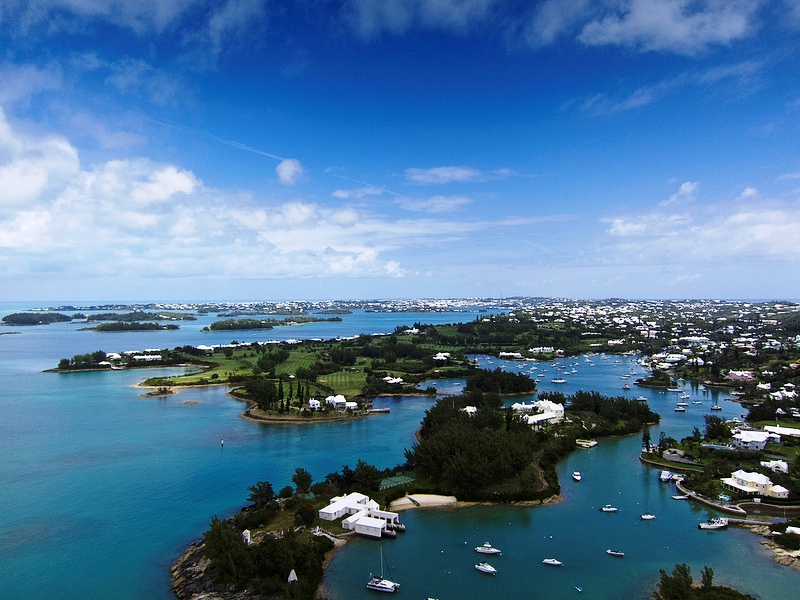
2016. December 19. The Bermuda National Trust welcomed the idea of proposals to transform the old Riddell’s Bay Golf and Country Club in Warwick into a 50-acre nature reserve. But the charity, whose objective is preserving many of the island’s open spaces, has urged investors behind the scheme to consult with the Trust as plans progress. A group of local investors has purchased the property. It hopes to use the majority of the land as a conservation zone, although the deal has not been finalized. The group has said only a “minimal amount of land on the outer fringes of the property” would be kept for “very low-impact, restricted, residential lots” and not condominiums. The new plans also call for the planting of more than 500 endemics and “stunning natural gardens”, significantly larger than the 36-acre Botanical Gardens.
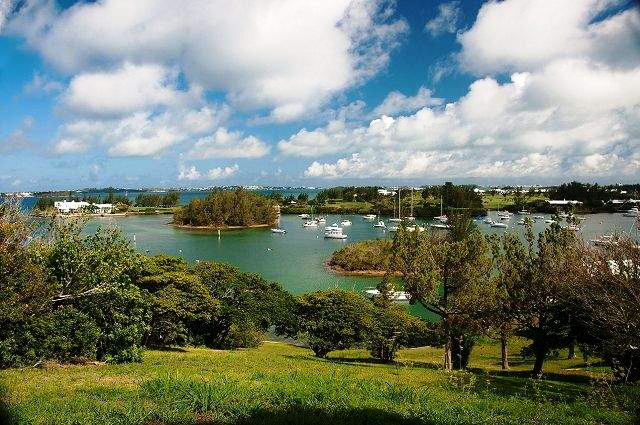

![]()
Middle Road. An historic Anglican or Episcopalian parish church begun in September 1626. It celebrated its 390th anniversary in September 2016. The church was started by a group of Warwick farmers who wanted to get together for regular prayer. That first building was likely a wooden hut made of cedar, the present-day stone structure was built by 1830. Since then, the 105-member church has undergone many transitions. The church/ like all other Anglican churches in Bermuda, has its own graveyard.
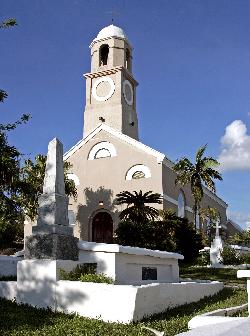
![]()
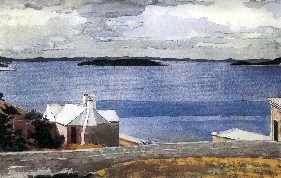 Harbour Road, overlooking the Great Sound.
An historic house with a unique literary past. See
the 1901 painting below, "Inland Water, Bermuda" by American artist
Winslow Homer. Not open to the public. It was built by one of
Bermuda's most successful privateers, Hezekiah Frith. He
hoarded booty from two stolen ships, kidnapped a young French woman, hid her from his wife
- and stashed his wealth for his family to start a liquor store. She and Frith
are said to haunt the
home.
Harbour Road, overlooking the Great Sound.
An historic house with a unique literary past. See
the 1901 painting below, "Inland Water, Bermuda" by American artist
Winslow Homer. Not open to the public. It was built by one of
Bermuda's most successful privateers, Hezekiah Frith. He
hoarded booty from two stolen ships, kidnapped a young French woman, hid her from his wife
- and stashed his wealth for his family to start a liquor store. She and Frith
are said to haunt the
home.
Frith, with his own maritime and naval background as a privateer sanctioned by Britain's Royal Navy, ensured that Spithead took its name from an area of the Solent and a roadstead off Gilkicker Point in Hampshire, England. It is protected from all winds, except those from the southeast. It receives its name from the Spit, a sandbank stretching south from the Hampshire shore for 5 km (3 miles); and it is 22.5 km (14 miles) long by about 6.5 km (4 miles) in average breadth. The Fleet Review is a British tradition that usually takes place at Spithead, where the monarch reviews the massed Royal Navy. In 1797 there was a mutiny (the Spithead mutiny) in the Royal Navy fleet at anchor.
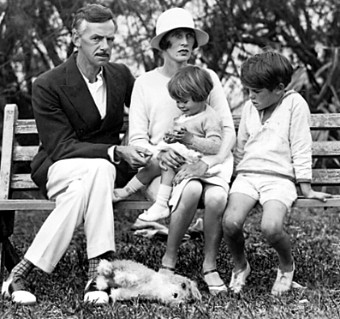 The
house was a carriage house at
the turn of the 20th century. In the 1920s the dramatist Eugene
O'Neill (born in USA October 16, 1888, died
November 27, 1953) once lived
here in alcoholic oblivion with Finn Mac Cool (eventually, in the USA, shot to
death by a neighbor). They had earlier lived in Paget
Parish. O'Neill and Mac Cool wrote famous works here and hosted many of their friends from
overseas. Later, O'Neill met Agnes Boulton, born September 19, 1893, who
became his second wife. She was a writer of popular novels and short stories.
Their first child, a boy, was Shane, born in Massachusetts in 1919. They
divorced about three years after the birth of their daughter Oona O'Neill
(later, Chaplin), born here in Bermuda on May 13, 1926 - some records claim May 14, 1925. She took the
nationality of her two American parents although technically by birth she was a
British citizen as well. At some point, after Spithead house was sold by the
O'Neill family, it belonged to the Biddle family, believed to have been from who
came from Philadelphia.
The
house was a carriage house at
the turn of the 20th century. In the 1920s the dramatist Eugene
O'Neill (born in USA October 16, 1888, died
November 27, 1953) once lived
here in alcoholic oblivion with Finn Mac Cool (eventually, in the USA, shot to
death by a neighbor). They had earlier lived in Paget
Parish. O'Neill and Mac Cool wrote famous works here and hosted many of their friends from
overseas. Later, O'Neill met Agnes Boulton, born September 19, 1893, who
became his second wife. She was a writer of popular novels and short stories.
Their first child, a boy, was Shane, born in Massachusetts in 1919. They
divorced about three years after the birth of their daughter Oona O'Neill
(later, Chaplin), born here in Bermuda on May 13, 1926 - some records claim May 14, 1925. She took the
nationality of her two American parents although technically by birth she was a
British citizen as well. At some point, after Spithead house was sold by the
O'Neill family, it belonged to the Biddle family, believed to have been from who
came from Philadelphia.
In 1941 Oona became one of the most sought-after debutantes of the social season. At that stage in her life she wanted to become an actress and follow in the footsteps of her grandfather James O'Neill, once a noted actor. During her teens Oona attended boarding school in New York where she met Gloria Vanderbilt and Carol Marcus. Later, she became close to Peter Arno (cartoonist), Orson Welles (actor and film director) and J. D. Salinger (novelist). Oona traveled to Hollywood in 1942 where she met silent film legend and British actor Charles Chaplin at the home of her agent. Chaplin began courting Oona after she auditioned for a film he was directing, and the pair married on June 16, 1943. He was 54; she was just 18. The marriage caused her to be disowned by her father. The Chaplin family once owned this house. With Chaplin she had a good marriage despite the age difference and had a number of children, five daughters (Geraldine Chaplin, born July 31, 1944; Josephine Ronet, born March 28, 1949; Victoria Thieree, born May 19, 1951; Jane, born May 23, 1957; Annette, born December 3, 1959) and three sons (Michael, born March 7, 1946; Eugene, born August 23, 1953; and Christopher, born July 6, 1962). Although Oona was content with her life, she was deeply troubled by the failed relationship with her father. Charlie died in 1977 at the age of 88 when she was only 51. Oona died in Corsier-sur-Vevey, Switzerland, on September 27, 1991 from pancreatic cancer and was buried there. She was said to have developed a few close relationships with Hollywood icons, such as with Ryan O'Neal, but she never married again.
The O'Neill Society had an International Conference in Bermuda back in about 2000, because of this connection. Files released in 2002 showed the British government blocked a knighthood for Chaplin for nearly 20 years because of American concerns about his politics and private life — he was married four times, twice to 16-year-old girls. He eventually became Sir Charles Chaplin in March 1975, two years before his death at age 88.
From 1956 until 1968, not Spithead House but Spithead Lodge, also on the estate, a smaller property which was once the carriage house of Spithead House, was owned and lived in by British actor, playwright and composer of popular music Sir Noël Peirce Coward (born 16 December 1899, died 26 March 1973). In 1957, from Spithead Lodge he sent a telegram to Agatha Christie, to congratulate her on the recent success of her play ‘The Mousetrap’, which overtook his own play, ‘Blithe Spirit’, as the longest running in the West End. Ms Christie’s grandson, Mathew Prichard, added that his grandmother greatly valued the opinions of her peers. He said: “I’d have thought to have had acknowledgment at The Mousetrap running so long would have pleased her very much.” He also confirmed that Ms Christie greatly admired Mr Coward. Today Ms Christie is the best-selling author of all time, along with William Shakespeare, according to the Guinness Book of Records.
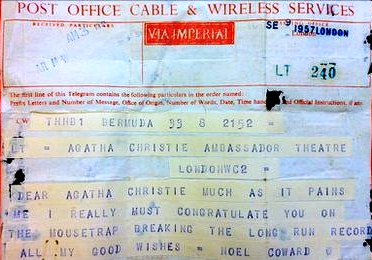
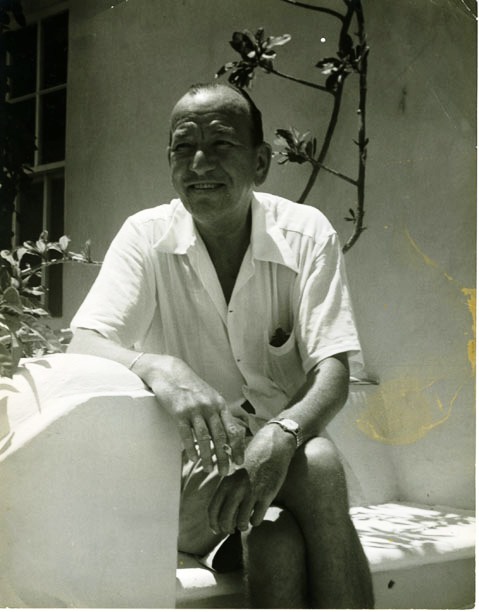
Photo shows Mr. Coward relaxing on the porch at Spithead Lodge
According to his longtime partner, Graham Payne, Mr Coward did not take well to the island’s winter and summer climate, so both hot and humid in summer and so much cooler in winter than in the Caribbean (but warm compared to East Coast USA) and as a result sold Spithead Lodge in 1959 to Hamilton and Toni Bolton of Montréal. Mr Coward went to live and bought a property in Jamaica that caught the trade winds and kept him cooler. He had originally moved to the island to escape what he considered to be the unjust tax situation in England. Later, the Bolton's, whose family members often came to visit, sold Spithead Lodge for a modest sum. Another house on the estate is called Watergate.
Until she died in late 2001 at the age of 86, Spithead House was owned by Bermudian realtor Joy Bluck Waters. It was later owned by her children and leased.
![]()
This
37 acre estate, the largest single estate now remaining in Bermuda, dates back to the eighteenth century. Until
recently it was wildly overgrown, historic and environmentally-sensitive with its
old limestone-cutting quarries, woodland and own beach. The
main hilltop house, with its three butteries, still standing today, was built in 1745
by the Warwick branch of the Dunscombe family. Later, Edmund Dunscombe and his
wife Elizabeth lived there. Their son Samuel was born there in 1770. Edward
Dunscombe was listed at living there in 1789. Thomas and (another) Elizabeth
Dunscombe who also lived there had a son, Thomas Tatum Dunscombe, born in 1793.
The Dunscombe family quarried
the limestone-rich land until around 1880. During the late 1700s, when Warwick Academy fell into disrepair,
ministers of Christ Church in Warwick taught the pupils at Southlands. The
main house has fallen into disrepair but the original limestone and cedar as
well as the remnants of the old slave quarters still remain.
Today eight properties
remain on the estate – but only four are still occupied. Southlands is home to
13 species of tree found nowhere else on the island as well as the biggest
Banyan grove in Bermuda — that is remarkably made up of just three trees.
Tangerine, mango, paw-paw and black ebony trees grow in this wilderness of
exotic plants and trees. It
boasts nine gardens and six ponds — and the coral centre-pieces as well as the
stone-walled edges to the ponds still remain intact.
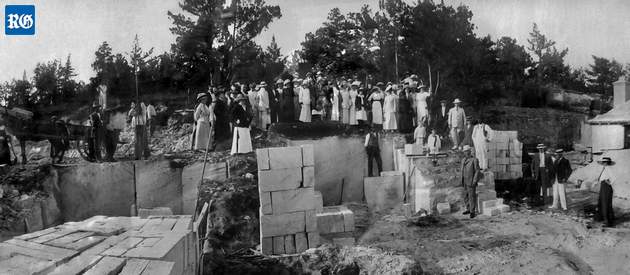 Towards
the end of the eighteenth century, Southlands became a limestone quarry. Much of
the stone was used to build the City of Hamilton, which became the Island's
capital in 1815. During the nineteenth century however, little is known about
the estate. It is
believed it remained
vacant for some years because the quarries made it “undesirable” to
prospective purchasers.
The
next known owner, Canadian businessman James Morgan, a Glaswegian by birth (some
say Montreal), his wife Anna and his family, bought the land in 1911 (some say
1913). Mr
Morgan extended the main house, which looks over South Shore, and added a
handful of imaginatively named cottages around the property including The
Mistresses’ Cottage and Morning Glory. He also created some beautiful gardens. Morgan
(1846-1932) also bought up the adjoining properties, extending the estate to
cover more than 80 acres. As the co-owner of Morgan's of Montreal with his
brother Henry, he built up a successful business and the Canadian department
store was seen as the Harrod's of its day. (It was eventually sold to the Hudson
Bay Company in 1960). Under
Morgan's artistic eye, Southlands blossomed. In
its pomp nine separate properties made up Southlands while more than 70 peacocks
roamed the lush estate.
Towards
the end of the eighteenth century, Southlands became a limestone quarry. Much of
the stone was used to build the City of Hamilton, which became the Island's
capital in 1815. During the nineteenth century however, little is known about
the estate. It is
believed it remained
vacant for some years because the quarries made it “undesirable” to
prospective purchasers.
The
next known owner, Canadian businessman James Morgan, a Glaswegian by birth (some
say Montreal), his wife Anna and his family, bought the land in 1911 (some say
1913). Mr
Morgan extended the main house, which looks over South Shore, and added a
handful of imaginatively named cottages around the property including The
Mistresses’ Cottage and Morning Glory. He also created some beautiful gardens. Morgan
(1846-1932) also bought up the adjoining properties, extending the estate to
cover more than 80 acres. As the co-owner of Morgan's of Montreal with his
brother Henry, he built up a successful business and the Canadian department
store was seen as the Harrod's of its day. (It was eventually sold to the Hudson
Bay Company in 1960). Under
Morgan's artistic eye, Southlands blossomed. In
its pomp nine separate properties made up Southlands while more than 70 peacocks
roamed the lush estate.
Morgan also played a major role in the development of Warwick Academy before he passed away in 1932. His generosity from 1918-1928 made possible the extension of buildings around a quadrangle area, which still remains the heart of the school. He also contributed towards an assembly hall (now the gymnasium) and a science laboratory. Morgan was a friend of headmaster Dr. Francis Landy Patton and encouraged students' gardening skills by providing them with plots in which to plant vegetables and flowers. Annual prizes were given to the plots showing the most originality. Morgan also donated a large sum to build Morgan's Hall. The road next to Warwick Academy, Morgan's Road, is named after him. He developed the estate into a wonderland of quarry gardens, exotic plant life, ponds, peacocks, aviaries and horses. Morgan filled in the holes left by the quarrying of the nineteenth century, creating ten ponds and surrounding pathways. He also extended the main house in 1913. In that year, Lyman, Anna Morgan's nephew Lyman visited Bermuda with his wife, Corinne St Pierre. It has been stated that Lyman was so entranced by the architecture of the Morgan's beautiful Bermuda home that he wanted to write a seminal book written about it and with that in mind brought in a photographer, Edward Babcock, from New York's Fifth Avenue, to capture the essence of buildings, interiors and individual pieces of furniture. The book idea was discussed by a number of Manhattan-based publishers but the idea never blossomed into reality. Morgan, ever the businessman, also contributed to Bermuda's heritage by lobbying for legislation for residents to paint their roofs white. He was later offered a knighthood for his civic contributions, which he declined. James Morgan died in 1932 and was buried in the same mausoleum as his late wife, Anna E. Lyman Morgan of Connecticut (1847-1929), on the Southlands estate. The mausoleum, deep in the woodland, is still there now. But the bodies had to be returned to Montreal after thieves repeatedly broke into the tomb in a bid to raid the couple’s possessions that were buried with them.
The next owner of Southlands, from 1947 to 1972, was Brigadier Dunbar Maconochie. He leveled out the beachfront and used it as a training ground for US soldiers, called the Southlands Anti-Aircraft School. The beachfront section of the property was even used by armed forces in the Second World War to practice firing anti-aircraft ammunition into the sea.
In 1976 the Trustees of the Willowbank Foundation bought the Southlands estate for $1.75 million but did not develop it. They planned to build a retirement complex. Plans were put forward for 130 residential units amid the natural beauty of the grounds. But when this failed the estate was sold to Southlands Ltd. in December 2005. Southlands Ltd.'s four key figures were businessmen Craig Christensen (whose daughter has lived on the property since 1995), Nelson Hunt, Brian Duperreault and wife Nancy. Until March 2008 it was planning a Jumeirah Southlands five-star resort. The Special Development Order (SDO) granted bypassed all the environmental impact controls. The SDO was approved by Cabinet and rubber-stamped by Environment Minister Neletha Butterfield after the original Planning application was rejected by Planning officials. Later, it was agreed by the Bermuda Government that the Southlands property would not become a hotel, would remain a park and would be exchanged for the former US Navy base in Southampton
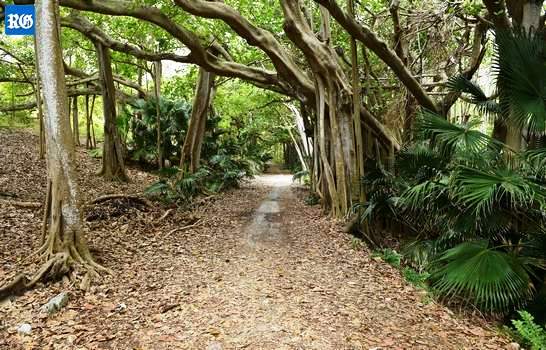
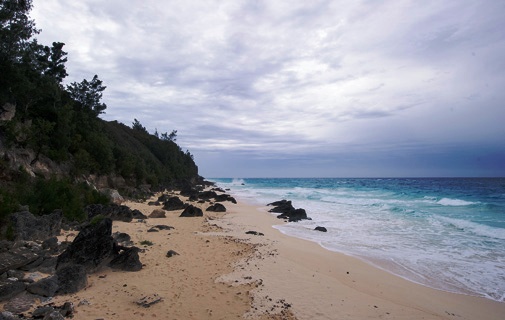
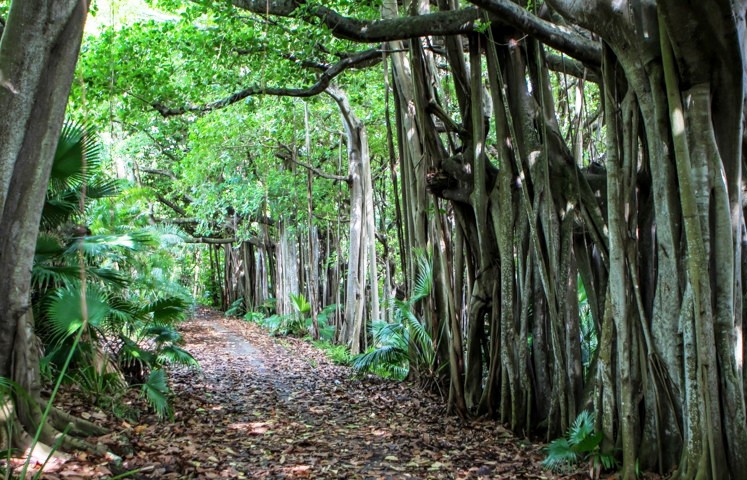
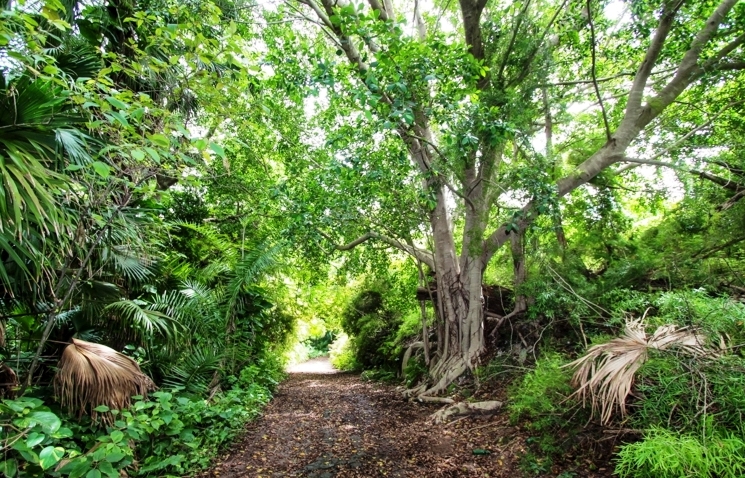
2019. June 30. Soldiers and civilian volunteers joined forces to clear vegetation at an historic estate designated as a national park. About 20 troops from the Royal Bermuda Regiment joined volunteers recruited by the Government’s Mirrors organisation and Department of Parks staff at Southlands yesterday. Many of the soldiers involved have just returned from the multinational Exercise TradeWinds held in St Vincent and the Grenadines. The volunteers targeted invasive species at the near-40 acre South Shore Road estate and cut back bushes and trees in the first of what is expected to be regular clear-up events at the estate. Kim Jackson, the Mirrors programme manager, said: “We want to kick off monthly community clean-ups of Southlands and get the public involved in community engagement, as well as learning about the history of the site. It’s a collaboration between Mirrors and the parks department and we asked the Regiment for some support. They’ve been fantastic. We so much appreciate the Regiment because they boost up the manpower. And, because they have people with chainsaws, that helps up enormously, as the volunteers can focus on picking things up and putting them in the trucks while the Regiment does the specialist work.” Margot Shane, the Mirrors office manager, added: “They’re half the people here — I think that says it all.” Lance Corporal Orville Hall, of the RBR’s humanitarian aid and disaster relief specialist B Company, said: “I’m enjoying it. Our expertise makes a big difference and I was happy to help — I like helping out people.” Colour Sergeant Harry Hunt, the RBR’s chief armourer, was the link between Mirrors and the RBR and helped organize the military contingent for the clean-up effort. He said: “We were happy to assist. It’s important because it allows Bermudians to see us working here as well as overseas. We also have a lot of useful skills that are transferable to a wide range of civilian applications. It also helps us improve our initiative and teamwork, so everybody’s happy.” Southlands was bought in 1913 by Scots-Canadian department store tycoon James Morgan who turned it into a series of ornamental gardens and pools based on former quarries that dotted the area. It was sold by Mr Morgan’s son after the businessman died in the 1930s. The estate passed through several hands before it was acquired by the Bermuda Government in 2010 in a land swap with the Morgan’s Point site in Southampton to save the open space from a hotel development and retain it as parkland.
2015. January 8. Southlands, located in a 27-acre parkland area in Warwick is now a Grade Two Listed Building. This brings the total number of Listed Buildings in Bermuda to 779. Grade two refers to buildings, structures or groups of buildings that are of such special interest and architectural or historical value that alterations and additions should be limited to works that do not impinge on those parts of the building that are protected and preserved. Such works should normally be carried out in the structural and decorative style of the existing buildings.
2012. June. Because the Bermuda Government finally signed over the former base land at Morgan’s Point to three developers who plan to build a $2 billion luxury resort there, which had been in the pipeline since 2007, the pristine Southlands estate in Warwick is now public property. Bermudian businessmen Craig Christensen, Nelson Hunt and Brian Duperreault, who then owned Southlands, agreed to swap 37 pristine acres at Southlands for 80 acres of brownfield land at Morgan’s Point on the Southampton/Sandys border. Opening up Southlands to the public as a national park will be a very interesting, urgent priority. The name of the park had yet to be decided.
![]()
![]()
Has some of Bermuda's choicest beaches. This is the entire stretch of the South Shore beaches, park and trails area stretching from Horseshoe Bay in Southampton Parish and going east. The prime Warwick Parish section of it begins at Chaplin Bay. It traverses Stonehole Bay and Jobson's Cove, and ends at Warwick Long Bay. Chaplin Bay is a superb public beach and scenic attraction, equal to the more famous Horseshoe Bay (in Southampton Parish), but without catering and changing facilities. If you're looking for a terrific beach with pink sand, turquoise waters, limestone cliffs and trails and more, in a nice location, this is a prime spot. Jobson's Cove is a small but gorgeous sandy beach cove is just east of Stonehole Bay. It too is a superb public scenic attraction, a terrific beach with pink sand, turquoise waters, limestone cliffs and trails and more in a nice location. Stonehole Bay. This small cove is between Jobson's Cove and Chaplin Bay. It is a superb public beach and scenic attraction, yet another prime location.
![]()
South Shore, off South Road. Public. It is located between Chaplin Bay and Jobson's Cove, at the extreme western end of this parish. Small, but gorgeous at low tide, hardly visible at high tide so be prepared to visit only at low tide. You will then be rewarded by this lovely setting with fewer visitors. It is one of the prettiest of all Bermuda's South Shore coves. Be aware of rip tides and cloudy waters near the coral reefs that can make good snorkeling uncertain. A personal favorite. There's an unusual history of this serene site. First, with the unusual name. It is so-called because of a gaping hole in a cliff-top coral formation that gives the stunning natural stone frame view of the beach.
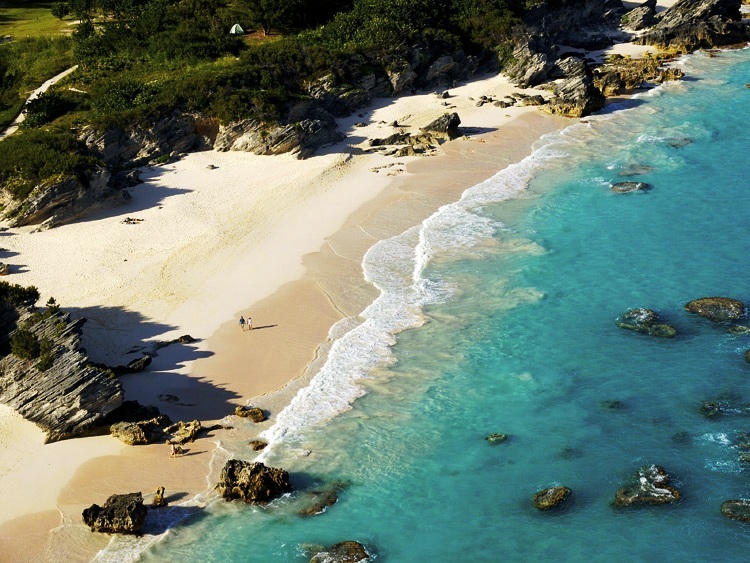
Not surprisingly, given that directly north of it on the land side of the South Road is the former British Army's Warwick Camp (later taken over by the Bermuda Regiment), for many years it was a favorite haunt of British Army regiments once quartered there in whole or in part. And because of this, they originally devised what later became known as Stonehole Stew, in commemoration of the beach. This unique stew was a culinary mix of initially British Army later civilian locally grown pumpkins, white or red and sweet potatoes, onions and salted imported beef traditionally cooked on camp fires in a three-legged iron pot. Photo: Bermuda Tourism
![]()
Be prepared and budget in advance for Bermuda prices. Food shopping is expensive.

![]()
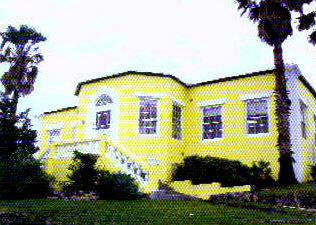 Middle Road. 11.26 acres.
Historic property. Donated to the Bermuda National
Trust in 1984 by Gloria Higgs, to preserve as open space. Also includes Tivoli
Pond and the Tivoli historic house shown in the attached photo. Thanks to a donation
by the family of the late Sir John Sharpe, a former Premier of Bermuda, the pond
is being conserved as a remnant of marches that once extended through Warwick
Valley. A refuge for wildlife and protected green space in a busy
suburban area and a learning resource for schools.
Middle Road. 11.26 acres.
Historic property. Donated to the Bermuda National
Trust in 1984 by Gloria Higgs, to preserve as open space. Also includes Tivoli
Pond and the Tivoli historic house shown in the attached photo. Thanks to a donation
by the family of the late Sir John Sharpe, a former Premier of Bermuda, the pond
is being conserved as a remnant of marches that once extended through Warwick
Valley. A refuge for wildlife and protected green space in a busy
suburban area and a learning resource for schools.
Once, many years ago, Bermudians and residents had a vegetable garden out back that they used to sustain the household. Nowadays, many barely have space for a potted plant, let alone an entire garden. The Bermuda National Trust offers community garden allotments here at Tivoli. The only caveat is that anything planted has to be organic.
There is also an orchard on the site producing a variety of fruit bearing plants including figs, guava and avocados. The plots cost users, with some of their fee going to BNT membership.
![]()
![]()
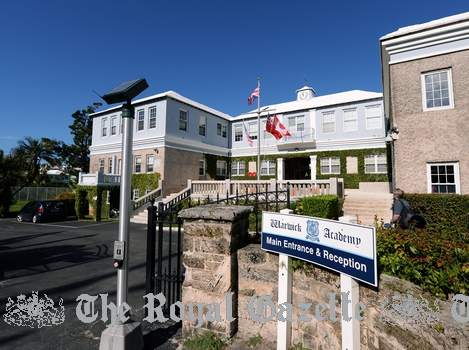
Historic Private School. 117 Middle Road, Warwick Parish, PG 01. Telephone: (441) 236-1251 or 236-1251 or 239-1917 (Office). Fax (441) 236-9995. Annual fees on application. There is a large waiting list at every level. It is a secular and co-educational day school. It was the first offshore school in the British Commonwealth, established in 1662 and operated continuously ever since. It was a private primary and secondary school until 1960 when it became a Bermuda Government aided secondary school. It reverted to private school status in 1990.
Warwick Academy. Our first 350 years. Book. 2013. Co-written by long time educator Andrew Dobson and school parent Catherine Kennedy. Commemorative history book. Intended to paint a picture of where the school has been and where it’s headed in the future. Researching Warwick Academy’s past was difficult. Pre-1930s school records had been lost at sea in 1929, after the data had been sent on a boat to be bound in New York, but sank upon its return to Bermuda. Appeals were made to former students and teachers to get their contributions and many responded.
![]()
In 2015, on April 10, a third gun, an historic two-tonne iron cannon was carefully lowered into its new position at the entrance to Warwick Camp. The Carron cannon, which dates back to 1807, had previously been upright in a wharf as a bollard for mooring boats at Convict Bay. The refurbished cannon and a replica cast iron carriage was moved from Dockyard to Royal Bermuda Regiment headquarters on a flat bed trailer as part of the 50th anniversary in 2015 celebrations of the Regiment. The island’s military heritage was given a further visible reminder with the placement of this big gun at the front gate of Warwick Camp. This cannon is almost ten foot long, with a bore of six inches, making it a 32-pounder. “It was made during the reign of George III and carries a “King’s Broad Arrow”, which was a symbol to be placed on anything bought for the British military. For many years, the cannon was used upright in a wharf as a bollard for mooring boats, so the salt water has damaged the bottom half of the gun. In order to position the gun, a concrete platform was necessary. A cast iron replica carriage of an 1840s design was also needed, provided by a donation from the Oil Group of Companies. The cannon itself is from the Napoleonic period and was made by the Carron munitions company, famous for its unique gun called a ‘carronade’, two of which adorn the front of Government House. Bermuda has a collection of over 150 historic guns, ranging in age from the late 1500s into beginning of the twentieth century.
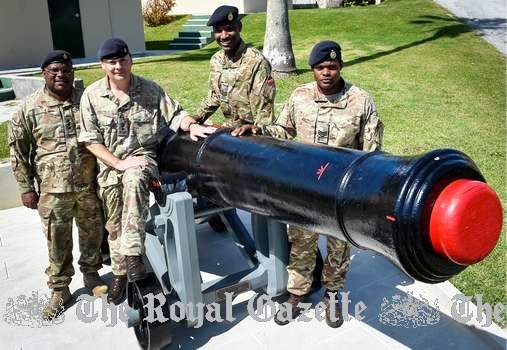
Historic cannon at Regimental HQ. See above story
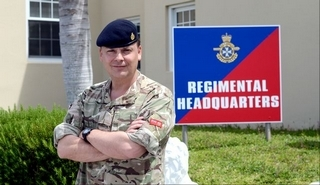
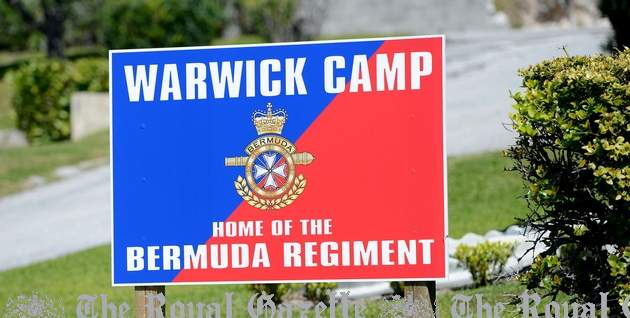
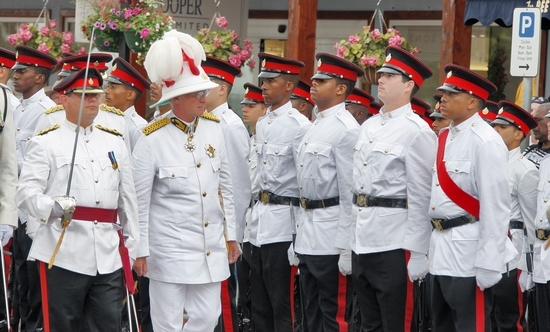
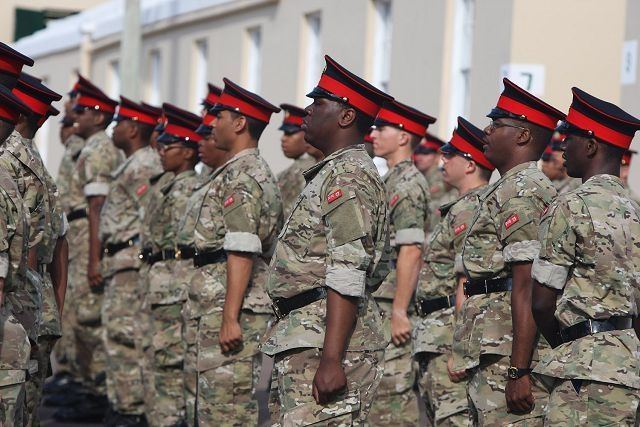
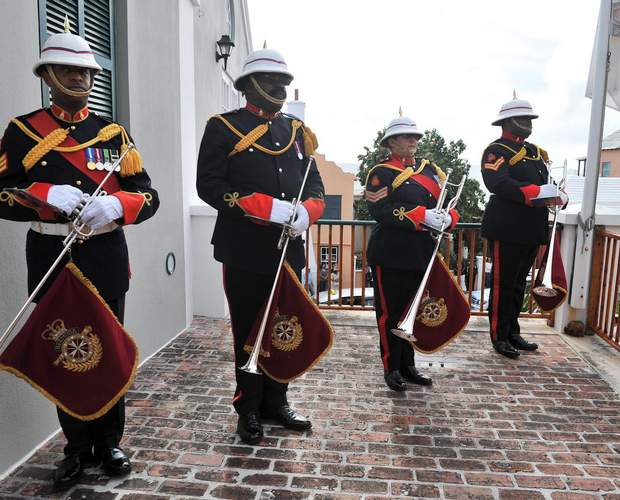
Royal Bermuda Regiment's headquarters are at Warwick Camp.
![]()
Bermuda's longest stretch of prime beach, particularly favored by many Bermudians and visitors. Part of the South Shore Park. Gorgeous for swimmers and an outstanding scenic attraction. Cliff trails can be explored. Good for a picnic. Public conveniences (toilets) are nearby. A playground for children is included. Access to and from all these beaches from the South Road, or overland from the Middle Road is good. The remains of a 17th century fort were found here in 2003. The # 7 bus route is not far.
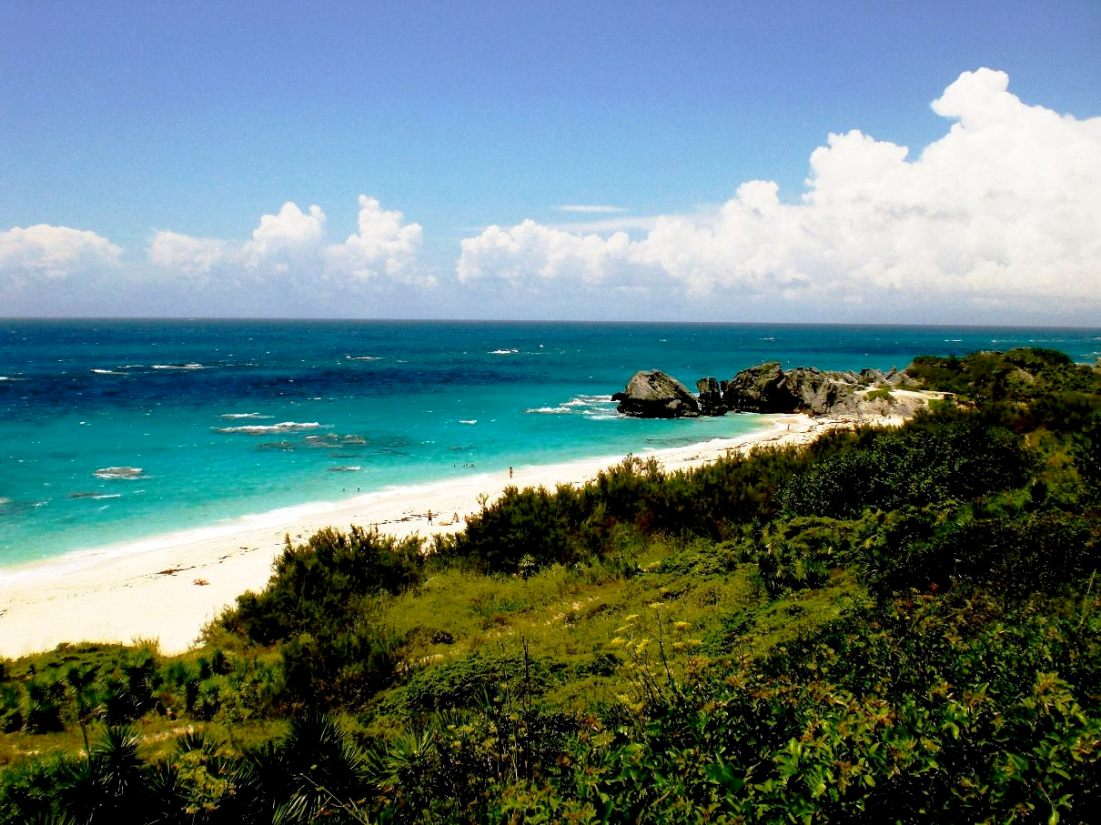
Photo: Bermuda Tourism
![]()
Appointed under the Parish Councils Act 1971. See under "Parish Councils" in Bermuda Government Boards.
![]()
Nature Reserve. 13 acres. Has an inland pond, the second-largest freshwater pond in Bermuda, located just to the north of the mid-section of the Warwick Parish section (part of section 3) of the Bermuda Railway Trail. It's an important sanctuary for resident and migratory birds, accessible from its northern side on the Middle Road. The # 8 bus route will take you to the Middle Road access. In 2000, the Bermuda National Trust enlarged the parking area, improved the trail, enhanced forest management and created a lookout deck over the pond. The trail links to the Bermuda Railway Trail, provides a better route for walkers and has a handrail in places. See interpretive signage about migratory waterfowl and creatures in permanent residence. Students can use the pond as an outdoor classroom to learn more about Bermuda's natural environment, via Bermuda Union of Teachers workshops.
![]()
On the southern side of the Bermuda Railway Trail, at the point where Warwick Secondary School is on the northern side. The woodland around here is mostly fragrant Bermuda indigenous allspice.
![]()
Spice Hill Road. A facility for the disabled, a registered charity with an Adaptive Sports Program, which allows people of similar abilities to engage in enjoyable and competitive activities specifically including horse riding. The program is one of several WindReach operates to improve the quality of life for those with special needs. It gives participants a positive influence on their overall health, quality of life, self-confidence, general level of activity, feelings of empowerment and general satisfaction with life. It helps prevent a decline in physical, cognitive, psychosocial functioning and to relieve stress and reduce depression.
2019. April 6. A new playground designed to be useable by the disabled could be completed by the end of this month. The attraction, at the WindReach centre for the disabled in Warwick, will feature an area for music, a mini-theatre, diggers able to be operated by wheelchair users and a “wonky mirror” room. Chrissie Kempe, the executive director for WindReach, said: “We had a wonderful tree house before but it had definitely done its time and we needed to start afresh. This has the value of being an inclusive and accessible space that really does support our mission to improve the quality of life, the focus is to encourage outside play for everybody. It is a perfect fit for us here.” The project, in the works for two years, was spearheaded by the Meet a Mum Association’s Boundless Bermuda arm, which raised $350,000 and managed the construction. The playground, designed by UK firm Capco, was created to be open to the disabled and able-bodied. Extra-wide slides, huts, bridges and a tower are already in place and only the filling of sand pits, the installation of soft safety surfaces and the installation of the digger have still to be completed. Ms Kempe said: “What is great about this playground is that it is completely customized and there is no other one like it. Capco really worked with us to understand what our users and participants would enjoy and ensured that there was something meaningful and engaging in all aspects of it.” Becky Lucking of Mama’s Boundless Bermuda added: “None of this would have been possible without the incredible generosity of our donors. We were delighted that Mark Cloutier and Brit Insurance kicked off our fundraising and they have been widely supported by the business community including Validus, Sompo, Butterfield & Vallis, GreyCastle and MS Amlin. We have also been overwhelmed by the kindness of children donating their birthday money, local sports clubs and everyone who has volunteered countless hours at our fundraisers. Ms Lucking also singled out Nikki Murray Mason and the team of volunteers who created a mosaic mural designed to highlight Bermuda’s wildlife as well as animals at WindReach such as horses. The playground will also be hired out for private parties.
• For more information, e-mail Paige Eversley at peverseley@windreach.bm or call 238-2469 ext 211
![]()
| City of Hamilton | Hamilton Parish | Paget Parish | Pembroke Parish | Sandys Parish | Smith's Parish |
| Southampton Parish | St. David's Island | St. George's Parish | Town of St. George | Warwick Parish |
![]()
![]()
Authored,
researched, compiled and website-managed by Keith A. Forbes.
Multi-national © 2020. All Rights Reserved